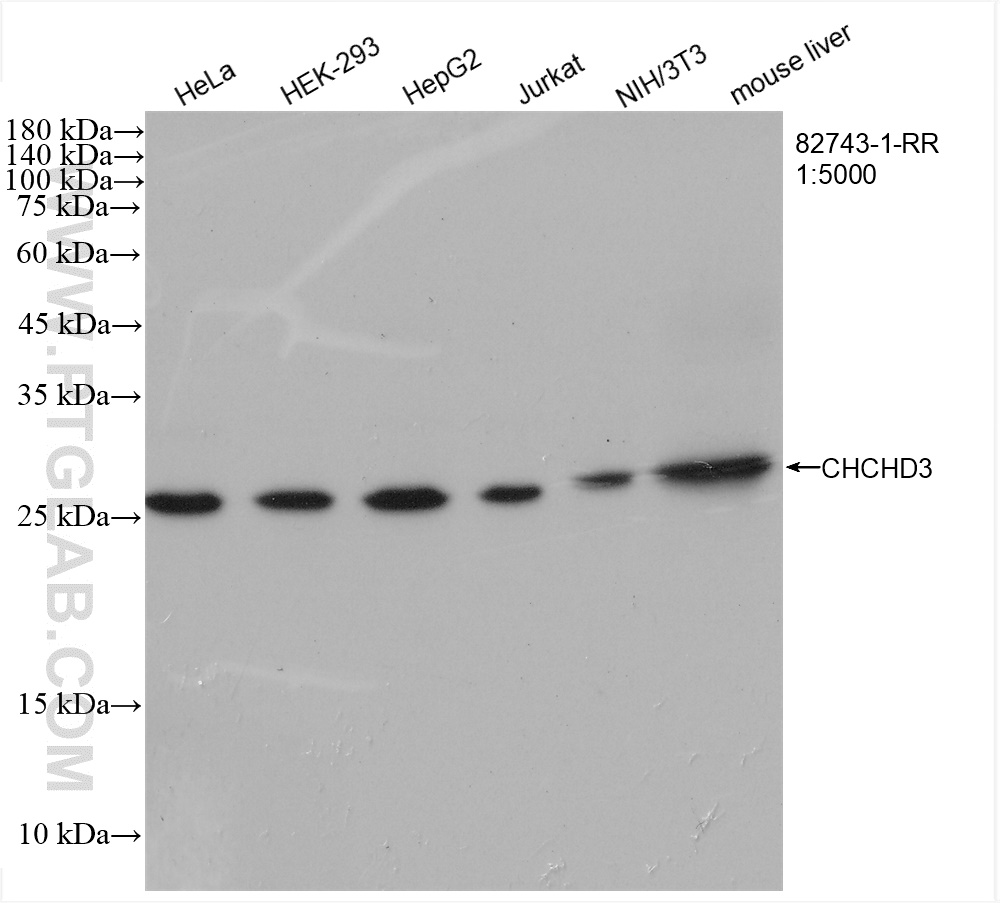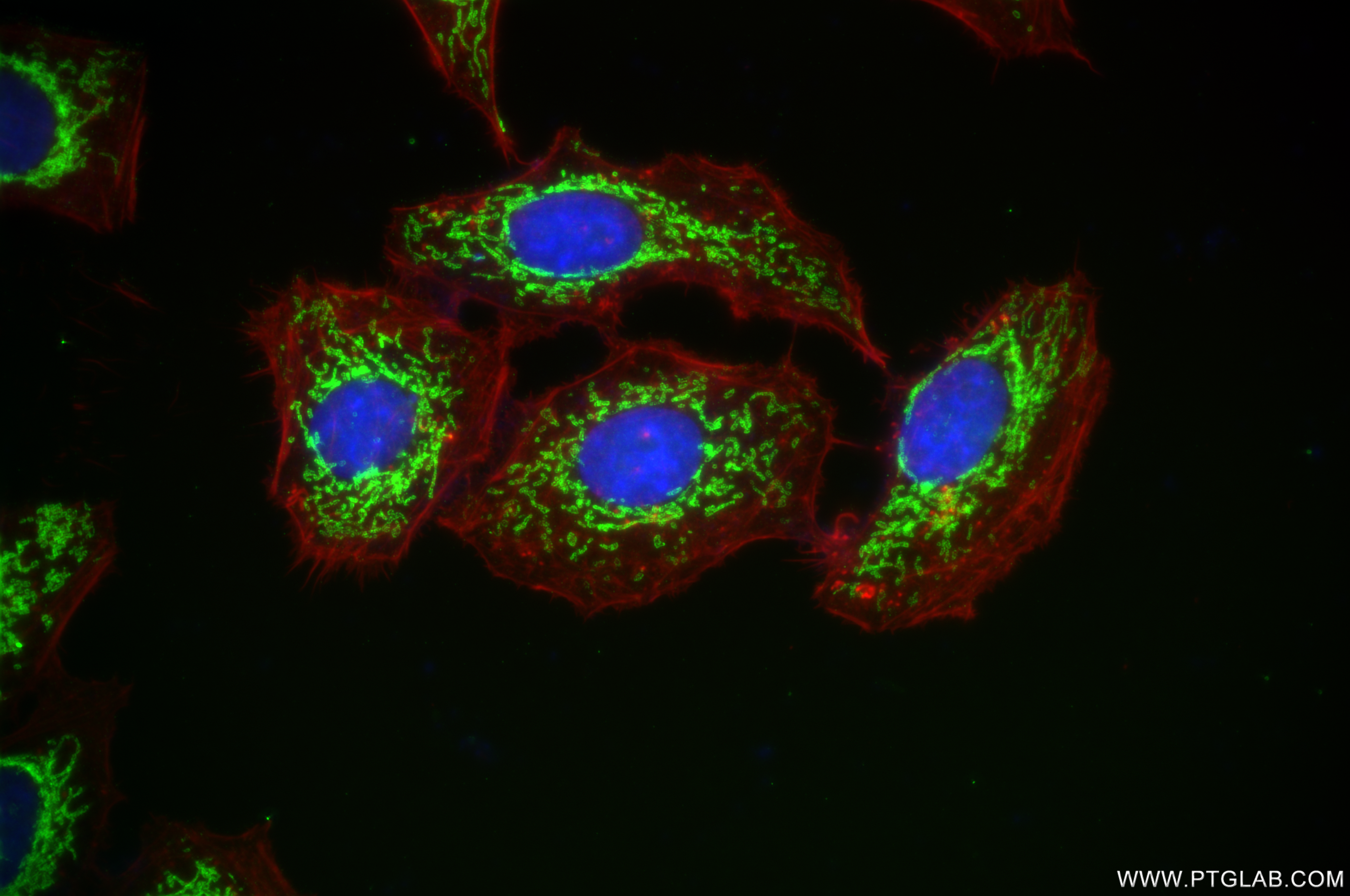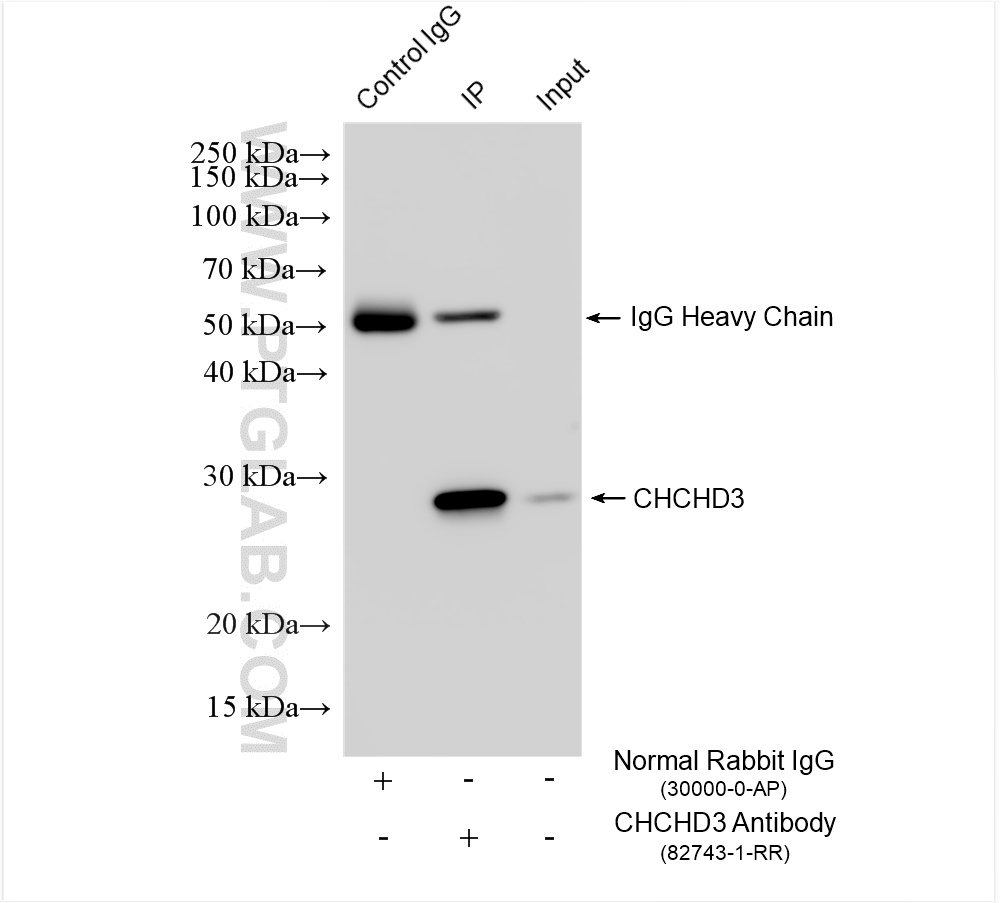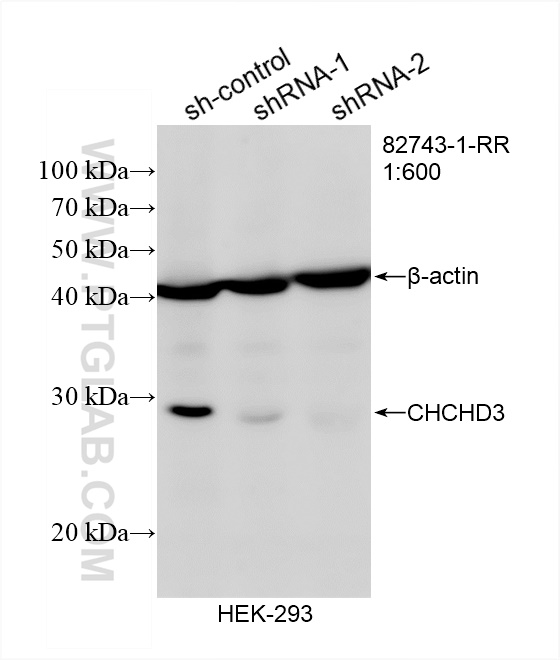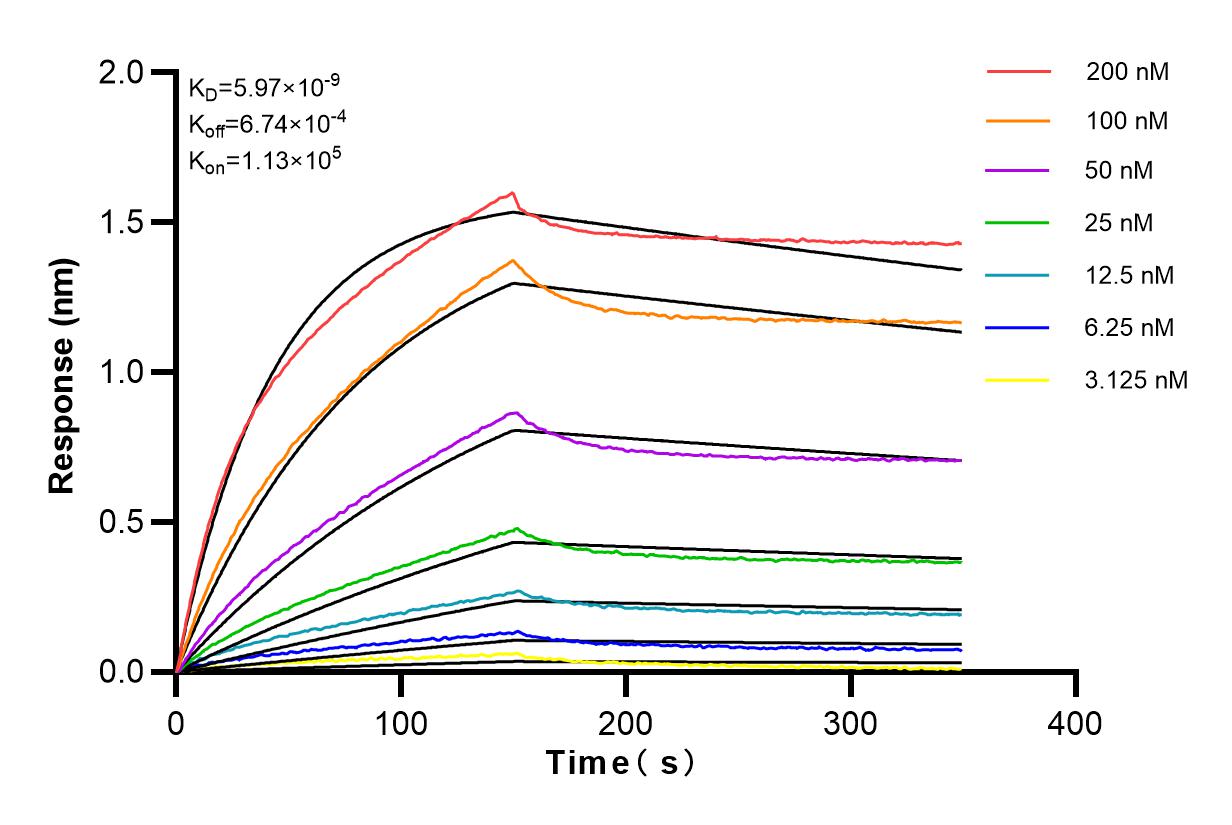验证数据展示
产品信息
82743-1-PBS targets CHCHD3 in WB, IF/ICC, IP, Indirect ELISA applications and shows reactivity with human, mouse samples.
| 经测试应用 | WB, IF/ICC, IP, Indirect ELISA Application Description |
| 经测试反应性 | human, mouse |
| 免疫原 | CHCHD3 fusion protein Ag22579 种属同源性预测 |
| 宿主/亚型 | Rabbit / IgG |
| 抗体类别 | Recombinant |
| 产品类型 | Antibody |
| 全称 | coiled-coil-helix-coiled-coil-helix domain containing 3 |
| 别名 | MINOS3, MICOS complex subunit MIC19, MIC19, Coiled-coil-helix-coiled-coil-helix domain-containing protein 3 |
| 计算分子量 | 227 aa, 26 kDa |
| 观测分子量 | 26 kDa |
| GenBank蛋白编号 | BC014839 |
| 基因名称 | CHCHD3 |
| Gene ID (NCBI) | 54927 |
| 偶联类型 | Unconjugated |
| 形式 | Liquid |
| 纯化方式 | Protein A purification |
| UNIPROT ID | Q9NX63 |
| 储存缓冲液 | PBS only , pH 7.3 |
| 储存条件 | Store at -80°C. The product is shipped with ice packs. Upon receipt, store it immediately at -80°C |
背景介绍
CHCHD3, initially identified as a substrate for cAMP-dependent protein kinase (PKA), is a ubiquitous protein in the mitochondria and plays a prominent role in maintaining cristae integrity and mitochondrial function. In mitochondria, ChChd3 is predominantly localized to the inner membrane (IM), facing toward the intermembrane space (IMS), and is part of the large protein complex now called as MINOS (mitochondrial inner membrane organizing system), or MIB (mitochondrial intermembrane space bridging) CHCHD3 is highly conserved in mammals with human and mouse protein sharing ∼92% sequence similarity.
